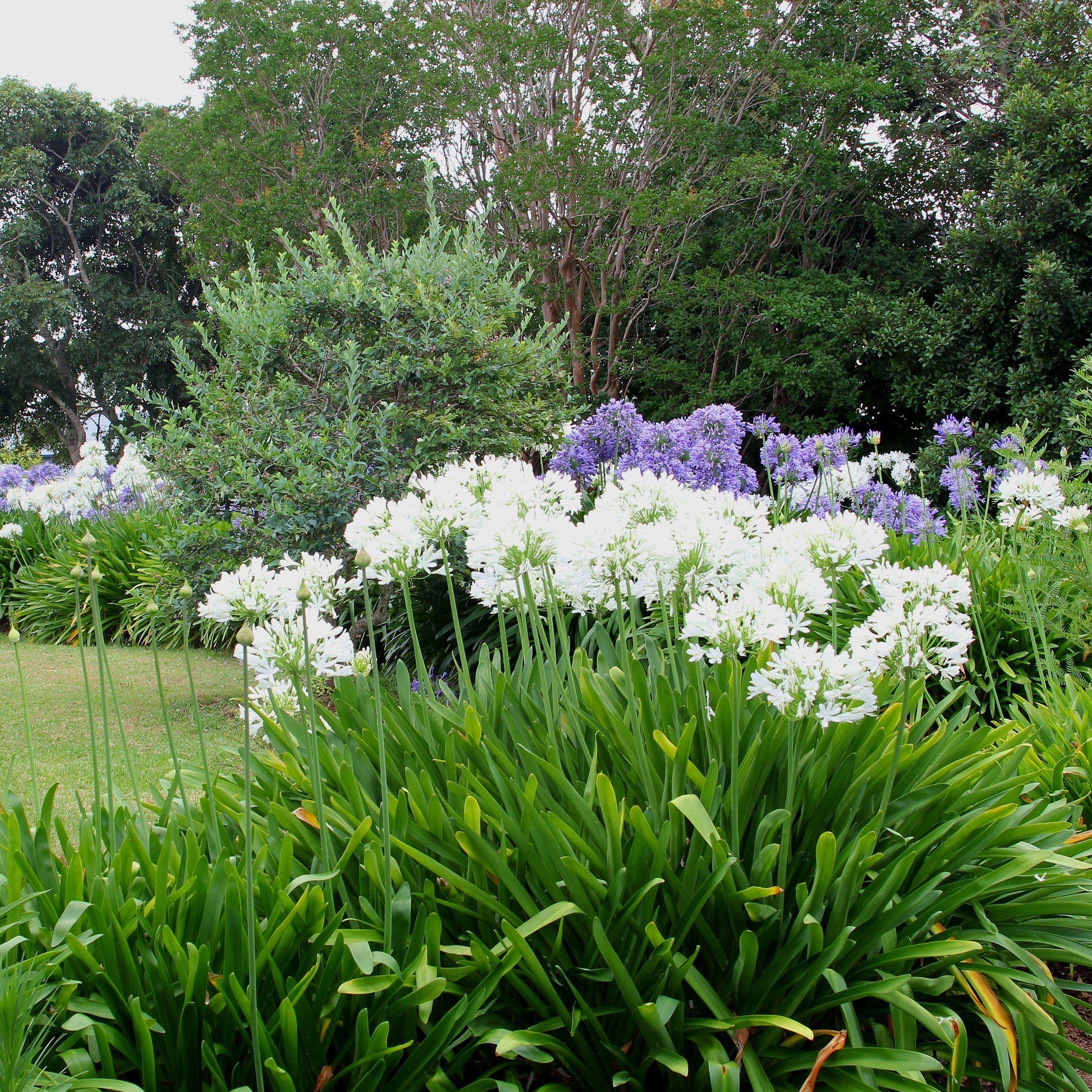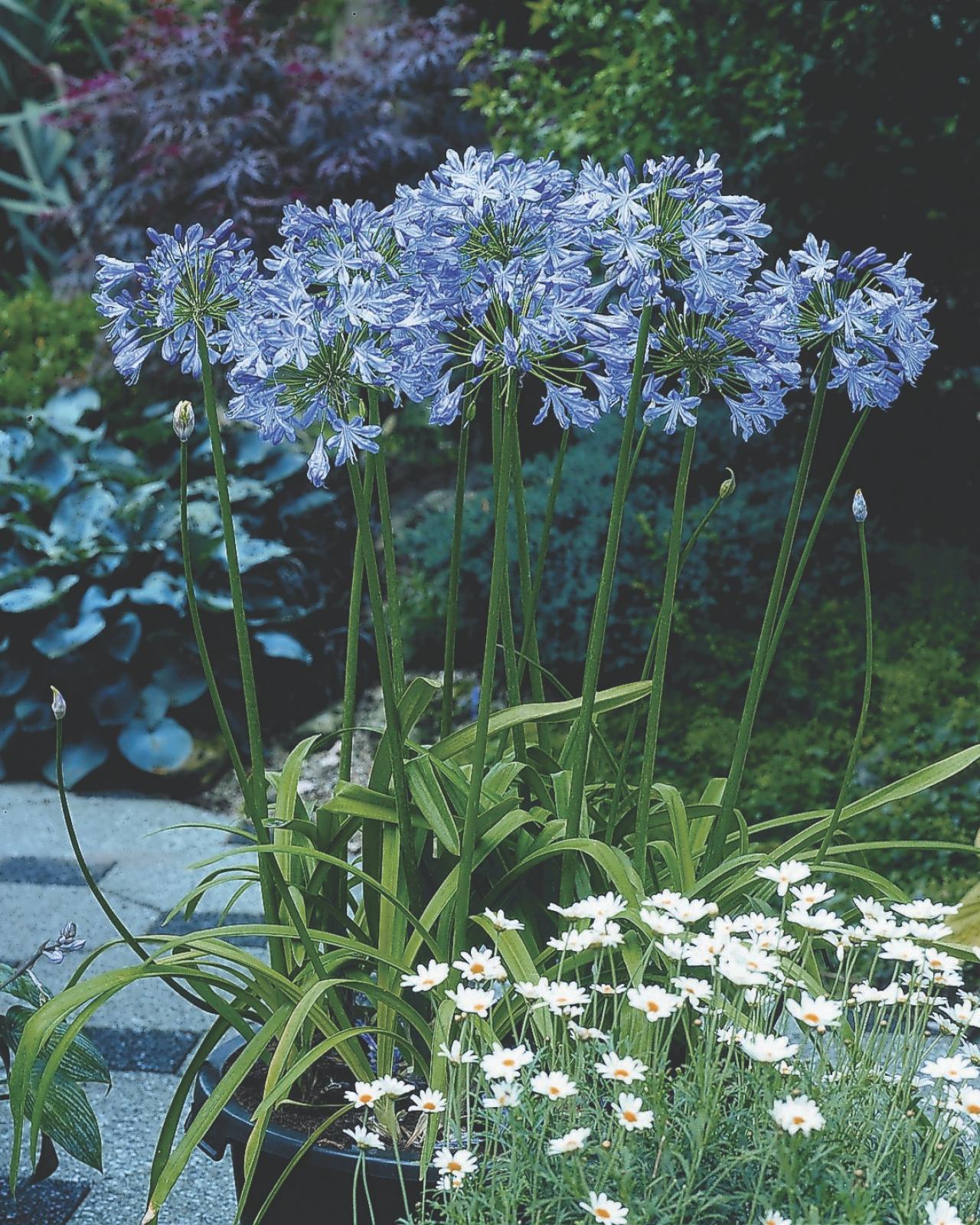How to Plant and Maintain Agapanthus in Your Garden
How to Plant and Maintain Agapanthus in Your Garden
Blog Article
Unleashing the Secret to Successful Agapanthus Cultivation: Advice for a Flourishing Yard
In the world of gardening, growing agapanthus successfully needs a tactical approach that encompasses different aspects of plant care. With mindful interest to information, one can open the secrets to supporting these magnificent blossoms, leading to a garden that grows with appeal and vibrancy. By recognizing the nuances of agapanthus cultivation, one can develop an atmosphere where these plants prosper and grow generously. In the adhering to discussion, we will certainly discover crucial pointers and tricks that will guide you in the direction of a thriving agapanthus yard, providing understandings right into ideal methods, soil problems, sprinkling techniques, and extra.
Growing Agapanthus: Best Practices
When growing Agapanthus, proper dirt preparation is necessary for ensuring effective growth and advancement of these stunning blossoms. Agapanthus, frequently known as Lily of the Nile or African lily, prospers in well-draining dirt with a slightly acidic to neutral pH level - Agapanthus. Before planting, it is essential to amend hefty clay soils with raw material such as garden compost or peat moss to boost drain and supply crucial nutrients for the plants
To grow Agapanthus, pick a location that obtains full sunshine to partial shade, as this will advertise healthy growth and plentiful blooming. Dig an opening twice the diameter of the plant's origin round and put the Agapanthus at the very same depth it was previously expanding. Delicately backfill the opening with dirt, weighing down firmly to eliminate any air pockets around the roots.
Water the recently planted Agapanthus thoroughly and remain to maintain the soil equally moist, especially during the plant's active expanding period. Agapanthus. Applying a well balanced plant food once a month can better support the plant's development and flowering. By following these ideal practices for growing Agapanthus, you can develop a spectacular screen of these fascinating flowers in your garden
Ideal Soil Conditions for Agapanthus
For ideal development and flowering success of Agapanthus plants, making certain the dirt problems are suitable is vital. Agapanthus thrives in well-draining soil with a somewhat acidic to neutral pH level ranging from 6.0 to 7.0. This kind of soil enables appropriate water drainage, protecting against waterlogging which can lead to root rot. To enhance soil water drainage, consider including organic matter such as compost or peat moss when preparing the growing website. In addition, Agapanthus prefers dirt that is abundant in nutrients, so integrating a well balanced fertilizer throughout the growing season can advertise healthy development and vivid blossoms.

Watering and Feeding Tips
To make sure healthy development and dynamic blossoms, correct watering and feeding methods are essential for effective Agapanthus growing. Agapanthus plants gain from routine watering, particularly throughout the growing period. It is recommended to water deeply when a week, guaranteeing the dirt is moist yet not saturated. Throughout heat or in pots, more frequent watering might be required to avoid the dirt from drying out entirely.
When it comes to feeding Agapanthus, a well balanced fertilizer with equal parts nitrogen, phosphorus, and potassium can be used in the spring to promote healthy and balanced development and flowering. Slow-release plant foods are excellent for supplying nutrients slowly over a prolonged period. Prevent over-fertilizing, as this can bring visit about excessive vegetation development at the expense of blooms.
In addition, incorporating raw material like compost into the soil can enhance nutrient levels and improve soil framework, aiding in the overall health and wellness of the Agapanthus plants. By adhering to these watering and feeding tips, garden enthusiasts can ensure their Agapanthus plants thrive and produce spectacular screens of flowers.
Trimming and Deadheading Strategies
Proper trimming and deadheading strategies play a crucial role in keeping the health and aesthetics of Agapanthus plants, matching the important practices of watering and feeding for effective farming. Pruning Agapanthus includes eliminating spent flower heads, dead or yellowing fallen leaves, and total shaping of the plant to advertise far better growth. Deadheading, the process of eliminating faded blossoms, not just boosts the plant's look yet likewise encourages more growing.
When deadheading Agapanthus, it is advisable to clip off the blossom stem at the base using sharp, clean shears. This procedure redirects the plant's energy from seed manufacturing back right into origin and foliage development, promoting a healthier and a lot more robust plant. Normal deadheading can extend the growing duration of Agapanthus and protect against self-seeding, which can bring about congestion.
In regards to pruning, Agapanthus typically gain from a light trim after blossoming to clean up the plant and encourage fresh development. Cutting down the invested blossom stems and removing any dead or broken vegetation helps keep the plant's vitality and total appearance. Nevertheless, it is important to prevent reducing into the crown of the plant, as this can damage its wellness.

Protecting Agapanthus From Pests and Diseases
Applying efficient pest and condition monitoring techniques is critical to protecting the wellness and vigor of Agapanthus plants in cultivation. Agapanthus are typically sturdy plants, yet they can still come down with different pests and diseases if not appropriately looked after. One common parasite that influences Agapanthus is the Agapanthus borer, a caterpillar that tunnels into the plant, creating damages to the fallen leaves and blossoms. To avoid problems, normal assessment of the plants is crucial. If borers are discovered, they can be manually gotten rid of, or insecticidal soap can be utilized as a control measure.
Along with parasites, Agapanthus are vulnerable to conditions such as root rot and fungal leaf places. These problems can often be prevented by ensuring correct drainage and staying clear of overwatering. Affected components of the plant must be promptly removed to protect against additional spread if indicators of illness appear. Fungicides might likewise be utilized as a treatment measure, complying with the producer's instructions very carefully. By staying attentive and addressing insect and illness issues promptly, garden enthusiasts can aid their Agapanthus prosper and flourish.

Verdict
Finally, effective growing of agapanthus needs correct growing methods, suitable soil problems, adequate watering and fertilizing, regular trimming and deadheading, and protection from illness and pests. By adhering to these tips and techniques, garden enthusiasts can ensure a prospering garden full of lovely agapanthus blooms. Agapanthus. Remember to keep constant linked here care and focus see here now to detail to advertise the health and long life of these spectacular plants
When planting Agapanthus, correct soil preparation is important for making sure effective growth and development of these beautiful blossoms.Water the recently grown Agapanthus completely and proceed to maintain the dirt uniformly damp, particularly during the plant's active growing season.For optimum development and flowering success of Agapanthus plants, ensuring the soil problems are ideal is vital. When transplanting or planting Agapanthus, guarantee the soil is well-prepared to offer the needed structure for the plants to develop themselves successfully. One typical pest that affects Agapanthus is the Agapanthus borer, a caterpillar that tunnels right into the plant, triggering damage to the flowers and leaves.
Report this page